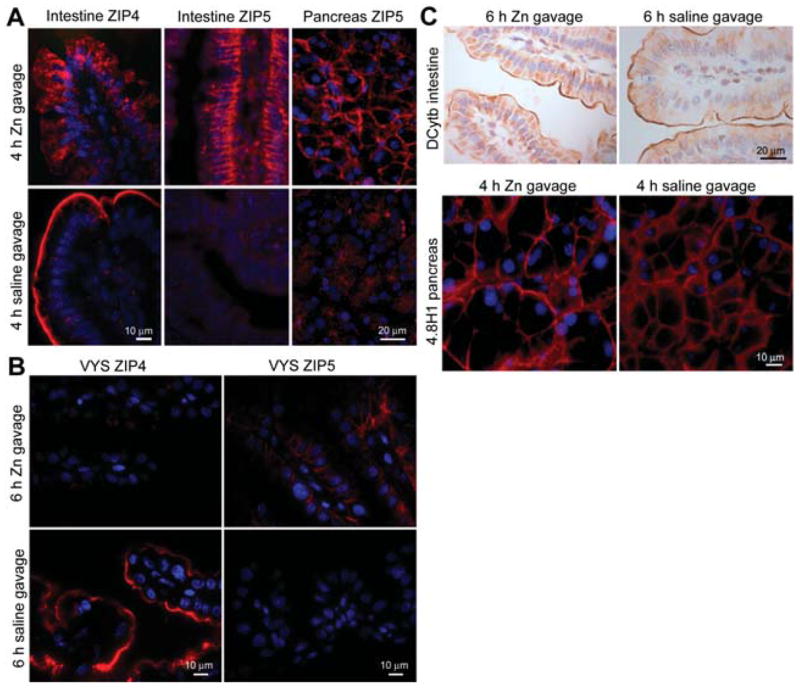Figure 4.

Effects of zinc repletion on the cellular localization of ZIP4 and ZIP5 proteins in the proximal small intestine (duodenum) and pancreas.
Two zinc deficiency models were used. Weanling mice were fed a zinc-deficient diet for 10 days beginning on the day of weaning. Pregnant mice were fed a zinc-deficient diet for 6 days beginning on d8 of pregnancy. On day 10 for weanlings and d14 for pregnant dams, the zinc-deficient mice were given an oral gavage of zinc (100 μmol ZnCl2/kg body weight) or saline, and tissues were harvested at the indicated times thereafter and fixed with paraformaldehyde in PBS. Cryosections of the indicated fixed tissues were prepared and ZIP4 and ZIP5 (A,B), or the indicated control proteins (C), were detected by immunofluorescence or immunohistochemistry. (A) Immunofluoresence localization of ZIP4 and ZIP5 in the proximal small intestine (duodenum) and pancreas. Zinc-deficient weanling mice were given an oral gavage of zinc or saline for the indicated times before harvest. Red: sites of antibody binding; blue: nuclei. (B) Immunofluoresence localization of ZIP4 and ZIP5 in the VYS. Zinc-deficient pregnant mice were given an oral gavage of zinc or saline, and fetal VYS was harvested 6 h later. (C) Immunohistochemical localization of the iron-regulated ferric reductase DCytb in the proximal small intestine and immunofluoresence localization of the basolateral membrane protein 4.8H1 in the pancreas from zinc-deficient weanling mice given an oral gavage of zinc or saline for the indicated time. Brown deposits: sites of antibody binding. Sections were counterstained with hematoxylin. The specificity of each of the antibodies used in this Figure has been previously demonstrated (De Lisle and Ziemer, 2000; McKie et al., 2001; Dufner-Beattie et al., 2003b, 2004).
